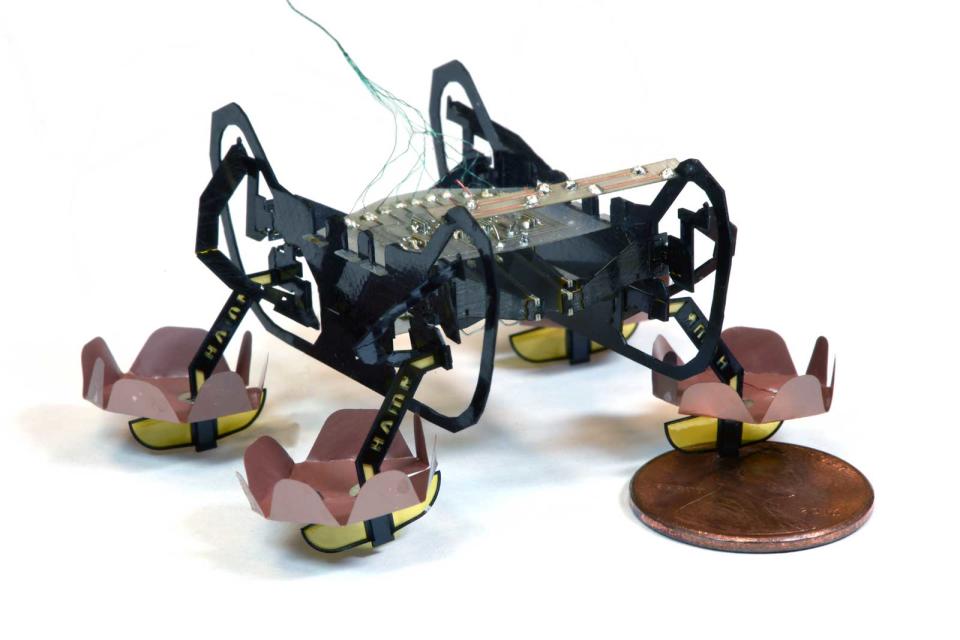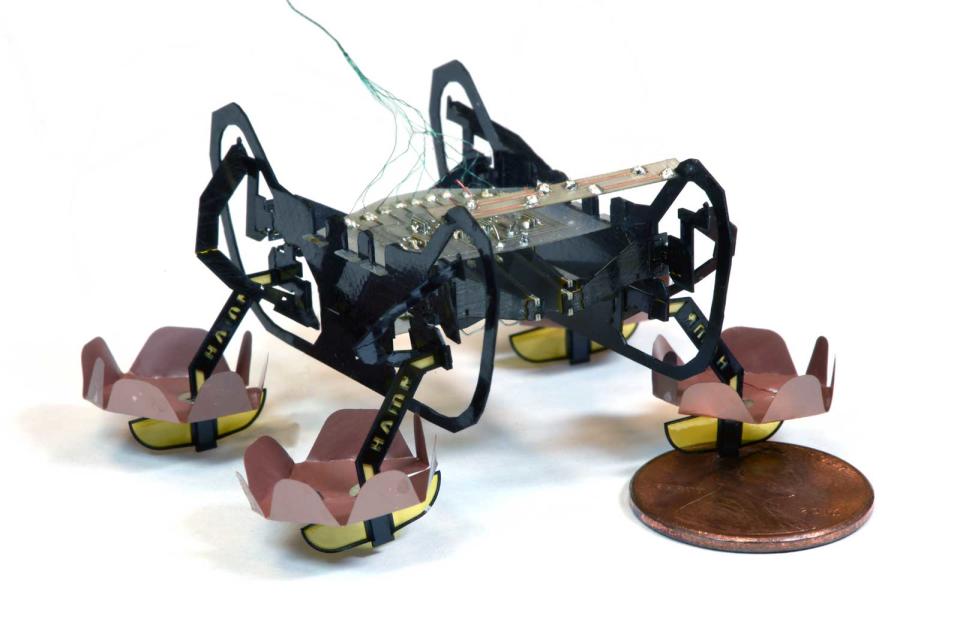Harvard's tiny robot can swim and walk underwater
The Ambulatory Microrobot is at home on land or a (very small) sea.
Harvard is developing a knack for tiny amphibious robots. Its researchers have upgraded the Harvard Ambulatory Microbot (HAMR) with the ability to swim and walk underwater, in addition to walking on land. Its foot pads use surface tension and related buoyancy to float on the water, while electrowetting (reducing the contact angle between a material and a water surface under a voltage) helps it break through the water and walk on the ground at the bottom. Its tiny size and 1.65-gram weight play a crucial role -- significantly bigger and it would be hard for the robot to stay above-water.
When it needs to return to land, HAMR overcomes the surface tension force with a stiffened transmission and soft pads that redistribute the friction while it climbs out of the water. The mini machine is even something of a cargo hauler with support for a 1.44-gram payload.
There's still work to be done, such as finding a way to return HAMR to land without needing a ramp. The team is considering solutions like a jumping mechanism or gecko-like adhesives. If they can make progress, though, you could see tiny robots deploying underwater sensors or otherwise performing feats that wouldn't be practical for their much larger counterparts.


